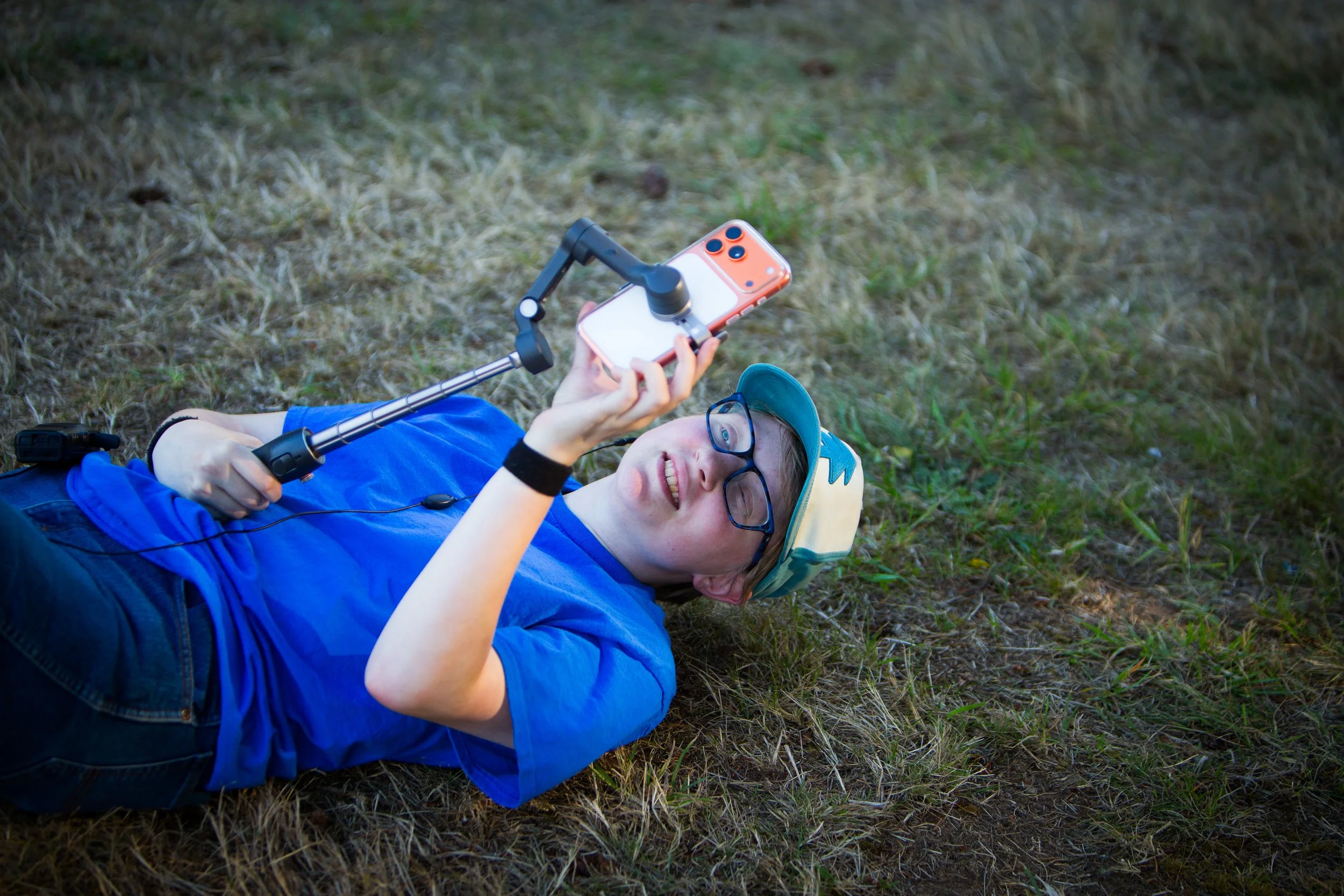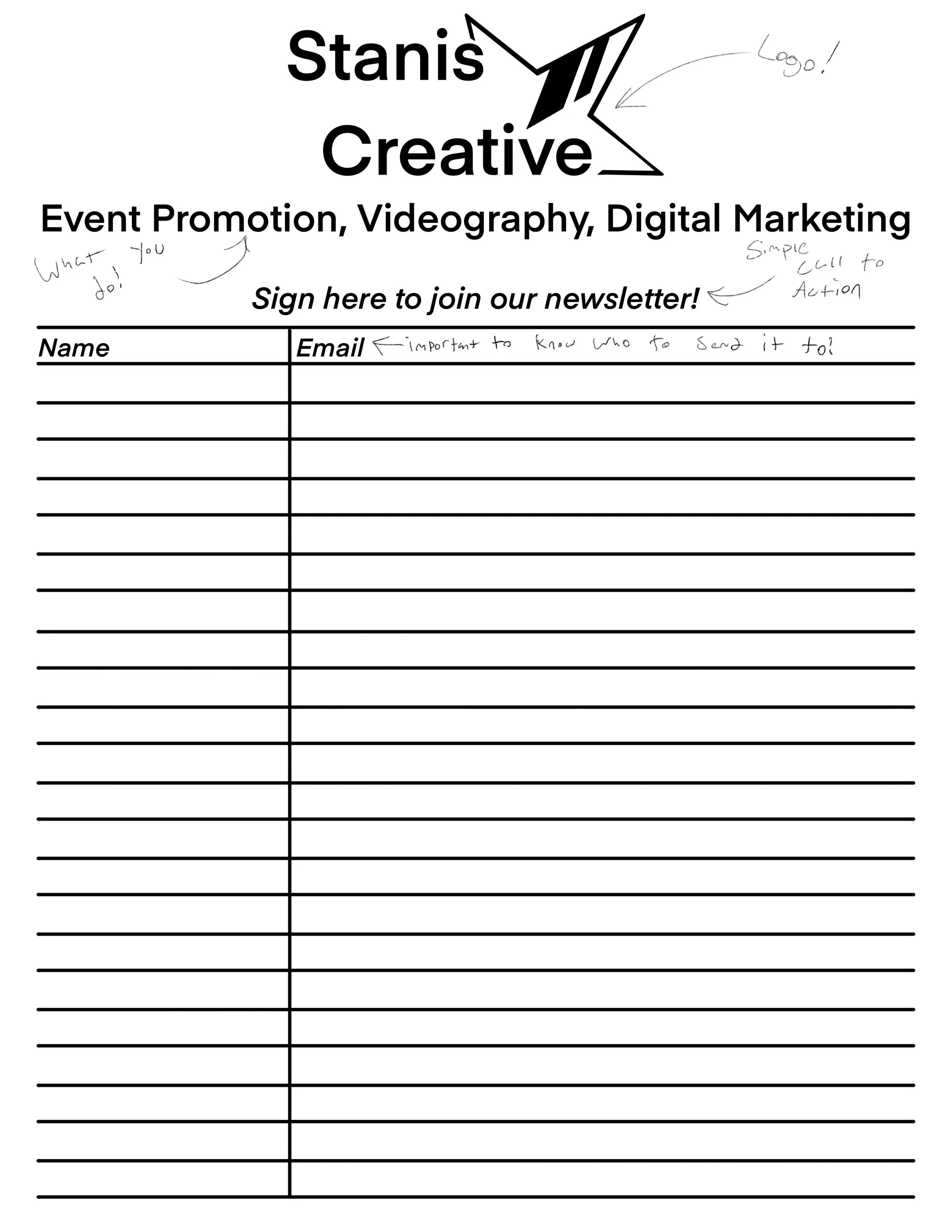The Creative’s Guide to Designing Email Newsletters That People Actually Want to Read
Jonathan and Julie on a boat.
A great newsletter feels like hearing from a friend. It’s not just another piece of marketing — it’s a moment of connection. Whether you’re sharing your latest creation, a behind-the-scenes story, or a special offer, your email should sound like you. That’s how you build trust, connection, and a creative community that lasts.
Why Newsletters Matter for Creatives
Jonathan smiling at the camera.
Social media is noisy. Algorithms shift, trends fade, and posts disappear in the scroll. But email? It’s direct. Personal. Chosen. When someone signs up for your newsletter, they’re saying, “I want to hear from you.”
For creatives — artists, musicians, makers, writers, and storytellers — newsletters do more than promote. They build consistency and community. They keep your name, your story, and your craft in your audience’s world, even between projects or events.
Think of your newsletter as your digital campfire — a place where your community gathers to hear what’s new, what’s next, and why it matters.
Define Your Newsletter’s Goal
Before designing or writing a single sentence, ask yourself: What do I want this newsletter to do?
Here are a few common goals:
Sales: Promote new products, artwork, or event tickets.
Updates: Keep fans or clients in the loop about upcoming shows, drops, or launches.
Storytelling: Share your creative process, inspiration, or personal journey.
Education: Offer tutorials, insights, or resources that help your audience grow.
Community Building: Celebrate customer stories, collaborations, or milestones.
You don’t have to pick just one — but knowing your primary purpose will guide your design, tone, and structure.
Structure That Keeps Readers Engaged
Think of your newsletter like a short story — it should have a rhythm and flow that keeps readers scrolling. Here’s a tried-and-true structure:
1. Header / Banner
Your logo or a simple, recognizable image. Keep it clean — this sets the tone for your brand.
2. Greeting or Hook
A quick intro that feels conversational. “Hey friends,” “From the studio this week…,” or “Behind the scenes at last weekend’s festival…” all work great.
3. Main Story or Feature
One focused highlight — your latest artwork, video project, or event. Add a few lines about the why behind it. This is your storytelling moment.
4. Visuals
Images make all the difference. Use high-quality photos or artwork that show your craft and personality.
5. Call to Action (CTA)
Guide your reader: “Watch the new video,” “Shop the collection,” “Read the full story,” or “Reply and tell me what you think.” Clear, simple, and inviting.
6. Sign-Off
Close like a person, not a company. “See you next week,” “With creativity,” “From our family workshop,” — whatever fits your voice.
Design Tips for Creative Businesses
Keep It Simple: Don’t overload with text or colors. White space gives your content room to breathe.
Use Consistent Branding: Fonts, colors, and tone should match your website or social feeds.
Make It Mobile-Friendly: Over 60% of readers open emails on their phones — test your layout.
Prioritize the First Impression: The subject line and preview text decide whether your email gets opened. Keep it clear and friendly.
Include Personality: A personal note or small anecdote humanizes your message.
Finding the Right Frequency
Liv capturing different perspectives!
The perfect schedule depends on your capacity and your audience’s expectations.
Monthly: Ideal for artists juggling multiple projects — a round-up of what’s new and what’s coming.
Bi-weekly: Keeps momentum without overwhelming readers.
Weekly: Great for content creators or musicians with ongoing stories or releases.
The key is consistency — it’s better to send one meaningful newsletter each month than four rushed ones that feel impersonal.
Examples of Creative Newsletters That Work
Our newsletter example with labels!
The Studio Journal: A monthly note from an artist sharing new works, upcoming markets, and one personal reflection from their sketchbook.
Maker’s Dispatch: A bi-weekly email with short video clips, product drops, and vendor shoutouts from local fairs.
The Storyteller’s Note: A weekly message from a writer blending updates with a mini-essay about creativity and process.
Each one works because it’s authentic, visually cohesive, and built around relationship, not just sales.
Start Simple, Stay Consistent
Don’t wait for the perfect design or a massive list. Start with a small audience and a clear message. Every email is a conversation — an invitation for your community to grow with you.
Remember: your subscribers signed up because they want to hear from you. So tell your story, share your process, and let your newsletter become a creative space of its own.
(Signed with Ink, Yarn, and Pixels -Stanis
Creative)





